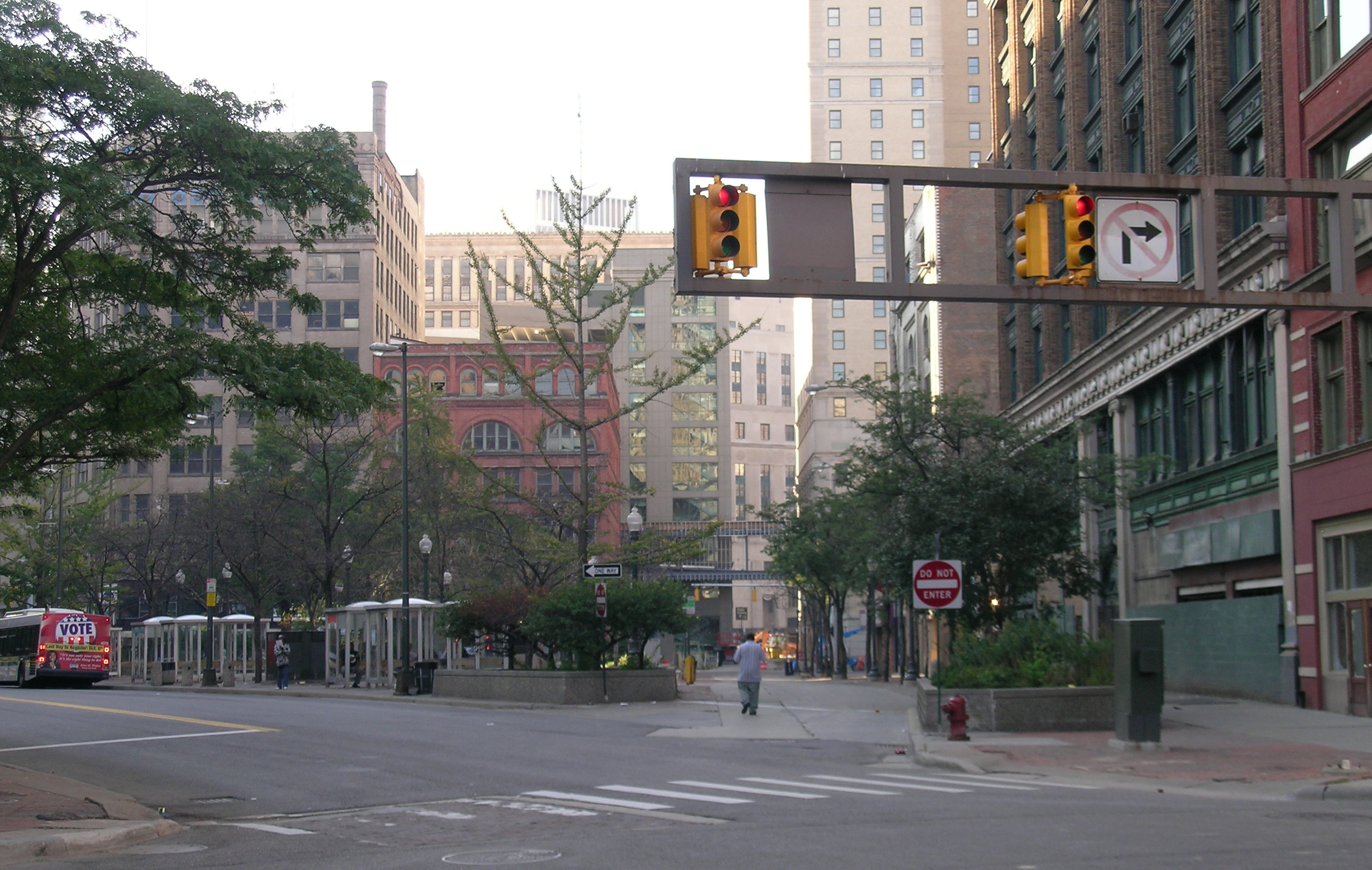- Capitol Park Historic District
Infobox_nrhp | name =Capitol Park Historic District
nrhp_type = hd

caption = Capitol Park, from the north
location=Detroit, Michigan
lat_degrees = 42
lat_minutes = 19
lat_seconds = 58
lat_direction = N
long_degrees = 83
long_minutes = 2
long_seconds = 58
long_direction = W
locmapin = Michigan
area =
built =1877
architect= Albert Kahn Associates et al.
architecture=Italianate , Romanesque
added =March 18 ,1999
governing_body = Private
refnum=99000338cite web|url=http://www.nr.nps.gov/|title=National Register Information System|date=2008-04-15|work=National Register of Historic Places|publisher=National Park Service]Capitol Park Historic District is an historic district located in
Detroit ,Michigan . It is roughly bounded by Grand River Ave., Woodward Ave., Michigan Ave., and Washington Blvd.Description
Capitol Park itself is a triangular plot of land (now a public park) bounded by Shelby Street, Griswold Street, and State Street. The plot is an artifact of
Augustus Woodward 's 1805 plan for the city of Detroit. [http://www.ci.detroit.mi.us/historic/districts/capitol_park.pdf Capitol Park Historic District] from the city of Detroit] The Historic District includes the park and seventeen [http://books.google.com/books?id=sZGskamYzjUC Eric J. Hill, John Gallagher, American Institute of Architects Detroit Chapter,] "AIA Detroit," Wayne State University Press, 2002, ISBN 0814331203, 9780814331200, p. 76] surrounding buildings for a block in each direction. Some buildings within the district include theFarwell Building , theGriswold Building , theDavid Stott Building , and theIndustrial-Stevens Apartments .History
In 1823, the population of Detroit had increased to the point that the US Congress transfered governance of what was then the Territory of Michigan to the governor and legislative council. To house the new government, a courthouse was built in Capitol Park in 1823-28. When Michigan became a state in 1837, the building became the state capitol, and functioned so until 1847 when the governmental seat was moved to Lansing. The building was then used as a public high school until 1893, when it was destroyed by fire. The land was then converted to a park, and it has remained a public space up to the present. In 1955, Capitol Park was redesigned for use as a public transport center, with a comfort station and four bus loading shelters.
The buildings within the Historic District surrounding the park were biult primarily during the first three decades of the twentieth century for commercial and business purposes. Several famous architects, including Albert Kahn and
Gordon Lloyd , contributed buidings in a range of styles, from Victorian toBeaux-Arts toArt Deco . The buildings demonstrate the transformation of Detroit from a prospering nineteenth century commercial center to a modern city.In addition to the present buildings, Capitol Park has an historic connection to the
Underground Railroad . In 1850,Seymour Finney purchased a plot of land near the park and erected a tavern with a large barn. [http://www.ci.detroit.mi.us/historic/districts/finney_barn.pdf Finney Hotel Underground Railway Informational Site] from the city of Detroit] Finney was strongly sympathetic to the abolitionist cause, and used his barn to hide escaping slaves before their final trek across the river intoCanada . A State of Michigan historical marker has been erected in the park to commemorate Finney's Barn.References
Wikimedia Foundation. 2010.
